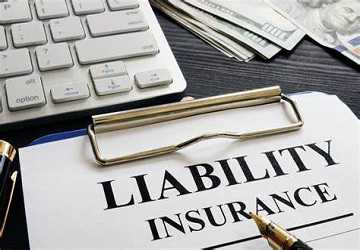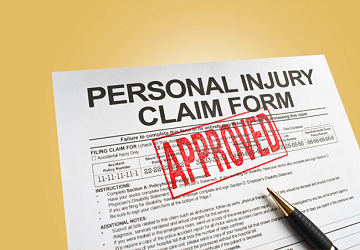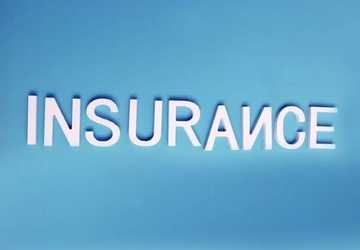Motorcycles are one of the most important and popular means of transportation worldwide. Driving in heavy traffic is child's play for two-wheelers, but in the event of an accident, two-wheelers are in great danger. Additionally, injuries can be severe, resulting in severe limb injuries, and some may even result in death.
When buying a two-wheeler, we look at everyday aspects such as design, colour, mileage and price to name a few. However, the right insurance for your motorcycle is crucial to the final purchase.
Most states have made motorcycle insurance mandatory for all riders, although not all states require it by law. So, let’s talk about how to choose the right insurance policy that can save you a lot of money as well as your wallet.
Liability Insurance
This core type of insurance pays for injuries and damages you cause to others. For example, if you are involved in an accident and the other person is injured, this insurance will cover the other person's medical expenses. It works for property damage, such as dents on a car. Rest assured that coverage is within the policy limits of your choice.

Now you will see numbers like 25/50/25. The specifications are as follows.
·25% of the bodily harm you inflict on others
·50% of multiple people injured in one accident
·Accidents cause 25% property damage.
You can choose a lower limit as a liability, which is a great way to keep costs down. But keep in mind that if your coverage is lower, you'll also have to plug the financial gap in the event of an accident.
Insurance coverage for uninsured drivers
You could be hit by a driver with little or no insurance. During this time, UM will pay all costs for you. No matter where you live, it's a good idea to have Umm or UIM coverage if your traffic increases.
Collision insurance
This type of insurance is best if your motorcycle collides with another object, such as a tree, car or building. Remember that collision insurance only covers damage to your bike, not damage to a second person. There, you will need liability insurance to get the job done.
Additionally, there are deductibles associated with comprehensive coverage. A deductible is a specific amount that is deducted from the final payment for a scope damage inspection.
For example, if your deductible is $200 and the repairs cost $1,500, collision insurance will only cover $1,300.
All covered
This is the best option as there are several options for your motorcycle. Theft, fires, floods, hail, and fallen objects (such as trees or branches) occur from time to time.
The policy also includes deductibles such as collision coverage. Therefore, it is advisable to take higher responsibilities to cover the costs.
Personal Protection - PIP
Personal injury protection is another great option for insuring drivers. Regardless of the fault, the insurance pays for you and your passengers. Keep medical expenses and medical bills for as long as you recover and are back on the road. Also, PIP covers lost wages if you are no longer able to work after an accident. It provides a backup service for tasks you can't do at home, such as cleaning.
PIP is mandatory in almost all states and if not, this option is recommended due to the loss of wage options.

Health Insurance Coverage - MedPay
Health insurance is another type of personal injury insurance, but it covers a wide range of policies and is defined below.
1. Medical emergencies and ambulance charges.
2. Recipe
3. Professional Nursing Services
4. Hospital bills
5. Health insurance deductibles and out-of-pocket expenses.
MedPay is great value because it also covers deductibles. So choosing this kind of insurance can reduce the liability.
Passenger responsibility
Most motorcyclists prefer to travel alone, but sometimes a passenger will accompany them. Passenger liability insurance can be helpful if you cause an accident. However, if you are not at fault, you can both claim damages from the at-fault driver under your liability insurance.
Guest liability insurance can also be purchased separately. However, if you want to combine it with insurance, that's fine too.
Remember, none of these insurance policies are mandatory. However, having one or both types of insurance is an excellent option for reducing liability in the event of an accident.
Additional motorcycle insurance options
1. OEM parts recommendation policy ensures that motorcycle parts are only replaced by original equipment manufacturers. If there is no OEM, you must be compensated based on the OEM's fair market value.
2. Custom features and equipment range work best when you want to customize your motorcycle with aftermarket parts. This type of insurance pays for the repair or replacement of aftermarket parts for your vehicle. For example, if you installed a new aftermarket speedometer on your motorcycle, this insurance will only cover any damage that occurs to that part.
3. Comprehensive coverage is another good option for motorcycles that have been involved in an accident or lost. This insurance bridges the gap between the actual cash value of the ACV and the cost of replacing the motorcycle. But remember when reporting: Your vehicle must be no more than three years old.
4. Suppose your motorcycle breaks down en route, roadside assistance is your best option. It covers the following electrical and mechanical breakdowns.
·The fuel tank is empty
·Not enough oil or water
·Lost key
·Puncture
·The battery is dead
Whether you're a novice or experienced rider, get help choosing the best insurance coverage for your motorcycle.


